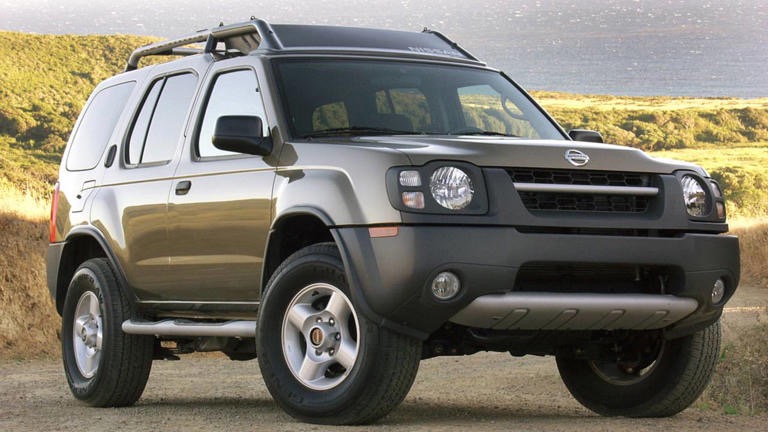In a bold shift that underscores changing market dynamics, Nissan has confirmed the long-anticipated return of the Xterra SUV for the 2028 model year. Alongside this announcement, the automaker has also revealed a major reversal in its electrification strategy: plans to produce a new electric vehicle in the U.S. have been officially scrapped.
This twin announcement marks a pivotal moment for the Japanese automaker, reflecting both a renewed focus on rugged, utility-first vehicles and a cautious re-evaluation of the electric vehicle (EV) landscape in the United States.
The Xterra Rides Again
The Nissan Xterra was once a popular fixture in the SUV world, beloved by outdoor enthusiasts and off-road adventurers alike. Last sold in 2015, the Xterra built a reputation as a no-frills, go-anywhere vehicle—affordable, functional, and genuinely capable. Now, a decade after it vanished from showrooms, Nissan is bringing it back, but this time with a modern twist.
Set to debut in 2028, the new Xterra is expected to be a hybrid-powered SUV, reflecting both current consumer demand for fuel efficiency and the company’s broader sustainability goals. While Nissan has not confirmed full specifications, the vehicle is likely to offer a body-on-frame construction, aligning it with mid-size SUV competitors that prioritize off-road performance. A V6 hybrid powertrain is reportedly under development, aimed at delivering a blend of power and efficiency suited for both trails and highways.
The new Xterra will be manufactured in the United States, specifically at Nissan’s Canton, Mississippi plant. This decision is seen as a strategic move to maximize production flexibility while keeping costs under control. The Xterra’s return also supports Nissan’s goal of revitalizing its North American lineup, adding an adventure-ready SUV to a portfolio that has leaned more toward crossovers in recent years.
A U-Turn on U.S. EV Production
In contrast to the fanfare surrounding the Xterra’s comeback, Nissan’s EV news is more sobering. The company has canceled plans to build a new electric SUV in the U.S., along with two electric sedans that were originally slated for domestic production. These moves represent a significant pullback from earlier commitments to expand EV manufacturing in the American market.
Nissan cited several reasons for this decision, including high battery costs, uncertain consumer demand, and a lack of pricing competitiveness. With development and material costs still high, the company estimated that its EVs would have launched at price points above $45,000—far out of reach for many of its traditional buyers. Given the rapid pace of change in the EV market and persistent uncertainty around federal incentives, Nissan executives determined that the investment no longer made sense.
The reversal doesn’t mean Nissan is abandoning EVs altogether. The company remains committed to electrification, especially in markets like Europe and Asia where regulations and demand are more favorable. But in the U.S., Nissan appears to be recalibrating its approach, opting for hybrids and plug-in hybrids as a transitional strategy while waiting for the economics of full EVs to improve.
Strategic Realignment
Nissan’s latest announcements reflect a broader shift in the automotive landscape. For years, automakers have raced to electrify their lineups, often driven by regulatory pressure and early optimism about consumer adoption. But in recent months, cracks have begun to appear in the EV narrative, particularly in North America.
While EV sales have grown, they haven’t kept pace with forecasts. Many buyers remain hesitant, citing range anxiety, charging infrastructure concerns, and high upfront costs. Meanwhile, interest in hybrid SUVs—especially those with off-road capability—has surged. Consumers are increasingly looking for vehicles that combine utility and sustainability without the compromises often associated with EVs.
By reviving the Xterra as a hybrid and pulling back from U.S. EV production, Nissan is clearly positioning itself to meet this emerging demand. It’s a practical, demand-driven pivot that may pay off, especially as competitors like Toyota and Ford also lean into hybrid technologies as a bridge toward full electrification.
Risks and Rewards
There are risks, of course. The SUV market is more crowded and competitive than ever, with strong entries from nearly every major brand. Reintroducing the Xterra will require more than nostalgia—it will need to deliver on performance, value, and efficiency. Nissan must also ensure the vehicle meets future emissions standards and offers the kind of tech and safety features modern consumers expect.
On the electrification front, stepping back now could create challenges down the line. If battery costs fall faster than expected or if government incentives are expanded, Nissan could find itself playing catch-up to rivals that stayed the course on EVs.
Still, the company appears to be playing a long game. By focusing on profitability, product appeal, and consumer preferences, Nissan is aiming to rebuild its brand in North America with vehicles that align with real-world market conditions—not just industry trends.

Looking Ahead
As the 2028 launch date approaches, all eyes will be on how the Xterra shapes up—its capabilities, its price, and its appeal in an SUV-hungry market. At the same time, Nissan’s evolving EV strategy will be watched closely as a bellwether for broader industry sentiment around electrification in the U.S.
For now, the message is clear: Nissan is doubling down on what it does best—building rugged, reliable vehicles—while keeping a cautious eye on an electric future that remains full of promise, but also fraught with uncertainty.












